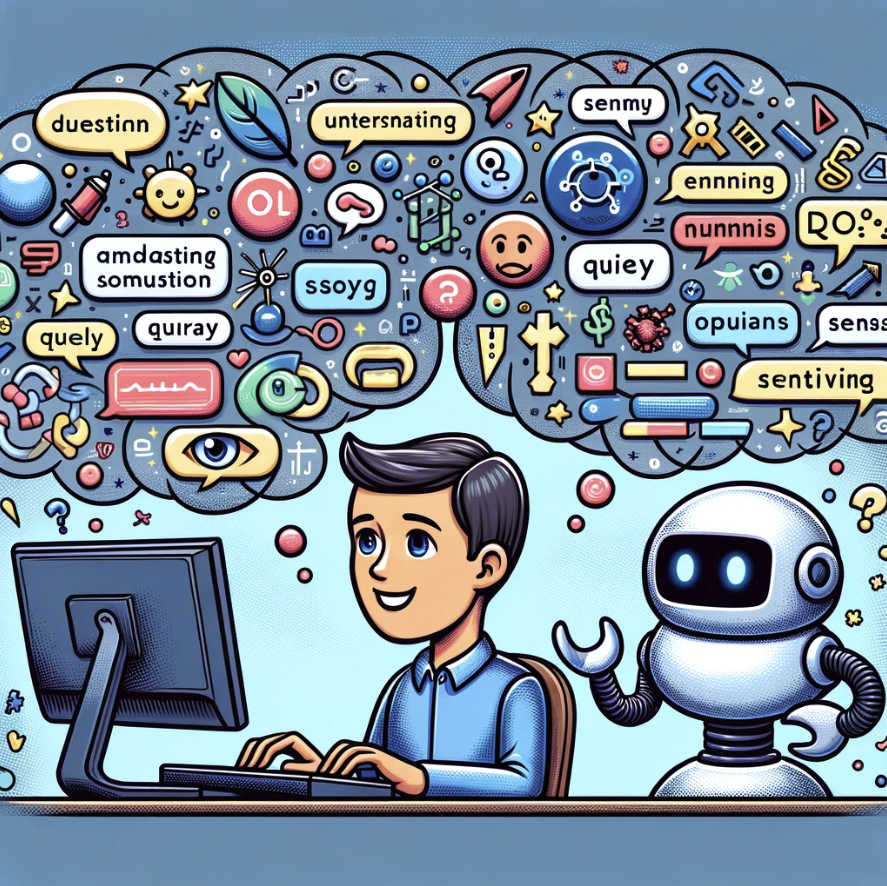Below are some query rewriting techniques introduced in Retrieval Augmented Generation (RAG):
Table of Contents
The Challenge with LLMs
User queries for language models can sometimes be inaccurate, wordy, or lack semantic information.
This makes it difficult for the LLM to search for and understand the relevant information needed to generate an accurate answer.
The Solution
Query rewriting techniques are designed to make user queries more precise and aligned with the semantic space of relevant documents.
This helps the LLM retrieve and process information more effectively.
Query Rewriting Techniques in Retrieval Augmented Generation (RAG)
Hypothetical Document Embeddings (HyDE)
-
- Concept: Generates hypothetical documents that try to capture the essence of the user’s query and what a good answer might look like.
- Process:
- LLM generates hypothetical documents based on the query.
- The hypothetical documents are encoded into vectors.
- These vectors are combined with the original query’s vector.
- This new, broader set of vectors is used to retrieve relevant documents.
- Implementation: Available in LlamaIndex and Langchain.
Rewrite-Retrieve-Read
-
- Concept: Believes that directly rewriting the query can be more effective for retrieval with LLMs than RAG’s standard retrieval and generation approach.
- Process:
- LLM rewrites the query focusing on improved search terms.
- New query is used for retrieval.
- Retrieval results and original query are used for answer generation.
- Implementation: Langchain with various libraries
STEP-BACK Prompting
-
- Concept: Helps the LLM focus on basic principles and abstractions rather than specific details in a query, especially when the user query is overly complex.
- Process:
- Abstraction: Generate a broader, high-level question from the specific query.
- Reasoning: Retrieve information about the broad concept and use that to answer the original specific question.
- Implementation: Langchain
Query2Doc
-
- Concept: Generates “pseudo-documents” using the LLM that expand and clarify the query, then combines them with the original query.
- Differentiation from HyDE: Assumes a less direct semantic connection between the pseudo-documents and ground truth
- Not yet directly replicated in Langchain or LlamaIndex.
ITER-RETGEN
-
- Concept: Iterative approach of “retrieval-enhanced generation” and “generation-enhanced retrieval”.
- Process:
- Use prior generated output with the query for new retrieval.
- Improve output generation using new retrieved information.
- Repeat the process for multiple iterations.
- Not yet directly replicated in Langchain or LlamaIndex.
Considerations
- While query rewriting helps, there’s a performance trade-off when using the LLM for rewriting tasks.
- Other pre-retrieval methods exist (query routing, decomposition) that are not rewriting focused.
Q&A – Query Rewriting Techniques in Retrieval Augmented Generation (RAG)
What is Retrieval Augmented Generation (RAG)?
Retrieval Augmented Generation (RAG) is a methodology in natural language processing that enhances the capabilities of large language models (LLMs) by incorporating external information retrieval into the generation process. In RAG, a query from the user is first used to retrieve relevant documents or information snippets from a large corpus or database.
The retrieved content is then provided to the LLM as additional context, aiding it in generating more accurate, informative, and contextually relevant responses. This approach leverages the vast amount of information available in external sources to overcome the limitations of the knowledge encoded within the LLM’s parameters, improving the model’s performance on tasks requiring up-to-date or specialized knowledge.
How does query rewriting improve Retrieval Augmented Generation systems?
Query rewriting improves Retrieval Augmented Generation systems by enhancing the alignment between the user’s query and the semantics of documents or data in the retrieval database. It involves rephrasing, expanding, or otherwise modifying the original query to make it more effective for retrieving relevant information.
By better matching the query with the document semantics, query rewriting helps in obtaining more accurate and relevant results for the LLM to use in its generation process. This leads to responses that are more informative, precise, and contextually appropriate, improving the overall performance of the RAG system.
What are the main challenges in aligning user queries with document semantics in RAG?
The main challenges in aligning user queries with document semantics in RAG include:
- Vagueness and Ambiguity: User queries often lack specificity, making it difficult to determine the exact information needed for accurate retrieval.
- Lexical Gap: The words used in the query may differ from those in relevant documents, leading to a mismatch between the query terms and the terminology in the database.
- Context Understanding: Without a deep understanding of the context or intent behind a query, the system may retrieve documents that are semantically unrelated to the user’s actual information need.
- Evolving Knowledge: As new information becomes available, keeping the retrieval database updated and ensuring queries align with the latest content poses a continuous challenge.
Can you explain the concept of Hypothetical Document Embeddings (HyDE) in query rewriting?
Hypothetical Document Embeddings (HyDE) is a concept in query rewriting where hypothetical documents are generated based on the user’s query to bridge the semantic gap between the query and the documents in the retrieval database. These hypothetical documents are crafted by a language model to simulate potential responses or information that the query might be seeking. These documents are then encoded into dense vector representations (embeddings) and used to enhance the retrieval process.
By aligning the semantic space of the query and the documents through these hypothetical embeddings, HyDE aims to improve the relevance and accuracy of the information retrieved, thereby enhancing the overall performance of the RAG system.
How does the Rewrite-Retrieve-Read technique differ from traditional retrieval methods?
The Rewrite-Retrieve-Read technique differs from traditional retrieval methods primarily in its inclusion of a query rewriting phase before the retrieval and reading (response generation) steps. In traditional methods, the system directly uses the user’s original query to retrieve relevant documents and generate responses based on this information.
In contrast, Rewrite-Retrieve-Read first reformulates the query to better match the language and semantics of the documents in the database, potentially leading to more accurate and relevant retrievals. This pre-retrieval query rewriting can significantly improve the quality of the information that the system uses for generating responses, resulting in more precise and informative outputs.
What is Step-Back Prompting, and how does it benefit query rewriting in RAG?
Step-Back Prompting is a query rewriting technique that involves abstracting the user’s original query into a broader question or concept before proceeding with information retrieval and response generation. This method benefits RAG by enabling the model to step back from the specific details of the query and consider higher-level concepts or principles that are easier to match with the available documents. By doing so, it can retrieve information that is more generally relevant and then reason down to the specific answer required.
This approach helps in dealing with complex or detailed queries where direct retrieval might struggle to find closely matching documents, thereby improving the accuracy and relevance of the generated responses.
What is the role of Query2Doc in improving query-document alignment?
Query2Doc plays a crucial role in improving query-document alignment by generating pseudo-documents based on the original query and then using these alongside the query itself for retrieval. This technique addresses the issue of lexical or semantic gaps between the user’s query and the documents in the database.
By creating pseudo-documents, Query2Doc essentially expands the query with additional context or interpretations that mirror potential document content related to the query. This expanded query, now richer in context and semantics, is more likely to match relevant documents during the retrieval phase. The alignment between the query and documents is thus improved, enhancing the quality of information retrieved for response generation in RAG systems.
How does the ITER-RETGEN approach work in the context of RAG?
The ITER-RETGEN (Iterative Retrieval-Generation) approach works by iteratively refining both the retrieval of documents and the generation of responses in a RAG system. In each iteration, the system uses the output generated in the previous step as additional context for the next retrieval and generation cycle.
Specifically, it starts with the original query to retrieve relevant documents and generate a preliminary response. This response, along with the query, is then used to retrieve more documents in a subsequent iteration, aiming to refine the context and improve the relevance and accuracy of the next response generated.
By repeating this process, ITER-RETGEN leverages the synergy between retrieval and generation to progressively enhance the quality of information retrieved and the appropriateness of the generated answers, leading to increasingly accurate and informative responses.
What are some common tools or libraries used for implementing query rewriting in RAG?
Common tools and libraries used for implementing query rewriting in RAG systems include:
- Hugging Face Transformers: Provides access to pre-trained language models like BERT and GPT that can be fine-tuned for tasks such as query rewriting and semantic matching.
- Elasticsearch: A search and analytics engine that can be used to implement sophisticated retrieval mechanisms, including those that leverage rewritten queries for improved document matching.
- FAISS (Facebook AI Similarity Search): A library for efficient similarity search and clustering of dense vectors, useful for implementing techniques like HyDE where embeddings play a crucial role.
- Langchain: A toolkit designed to facilitate the development of applications that combine language models with external knowledge sources, supporting various query rewriting and augmentation techniques.
How do developers choose which query rewriting technique to use in their RAG implementation?
Developers choose a query rewriting technique for their RAG implementation based on several factors, including:
- Task Requirements: The specific needs of the task, such as the level of precision and recall required, can influence the choice of technique.
- Query Characteristics: The nature of user queries, including their complexity, specificity, and domain, may favor one method over others.
- Available Resources: The computational resources available can limit the choice of techniques, as some may require more processing power or memory.
- Document Database Characteristics: The structure, size, and update frequency of the document database can affect the effectiveness of different query rewriting methods.
- Experimental Results: Developers often rely on empirical testing and evaluation to compare the performance of various techniques on relevant metrics before making a selection.
By considering these factors, developers can choose the most suitable query rewriting technique to enhance the performance of their RAG systems in aligning user queries with document semantics, thereby improving the accuracy and relevance of the generated responses.


